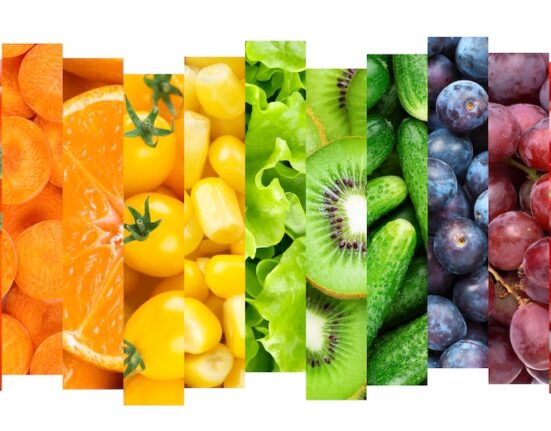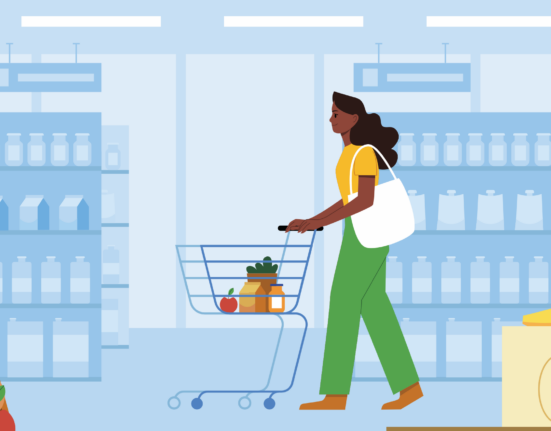The forward prospects for the coming year will be strongly linked to the overall development of the wider economy and how this impacts on consumer behavior. In this respect, the U.S. economy has rebounded strongly in the past 12 – 18 months, from the depths of the pandemic recession, aided by a large and enduring government policy response. However, Russia’s war against Ukraine, the current situation in the Gulf and still strong underlying inflationary pressures have also contributed to dampening to some extent, the immediate future economic outlook.
As a result, leading economists are taking a cautious approach to 2024. The consensus is for a slowing down of any economic growth from the 3% seen in 2023, perhaps even a mild recession, but also with lower interest rates and lower inflation. While 2023 wasn’t a full return to anywhere near the “pre-pandemic normal,” it did see a significant decline in inflation rates.
As a result, food and fresh produce inflation continued to slow, which is good news for consumers. As an example, in November 2023, all food prices were just under 3% higher than a year ago, according to the latest U.S. Consumer Price Index. The inflation rate for grocery food in November 2023 was just under 2% above November a year ago, while prices in the all-important foodservice sector were 5% up on the same time last year.
Retail prices for fresh fruits and vegetables are predicted to continue their slow growth relative to other categories, with fresh fruits and vegetables up by less than 1% in 2023. This is expected to be the case again in 2024. As a result, consumer demand for fresh produce in 2024 should remain relatively buoyant.
The U.S. Market Continues To Grow
The fresh produce market in the U.S. is estimated to grow at a CAGR (Compound Annual Growth Rate) of 6 – 7% between 2023 and 2027 and to increase in value to some US$26 billion. This growth, however, depends on several factors, including government initiatives to increase horticultural production, a rise in veganism and an increasing consumption of processed fruit and vegetable products.
The supermarket route to market, accounting for around 55% of overall sales, still dominates the distribution of fresh produce in the U.S. In 2024, this shows no fundamental sign of change. During the pandemic, many U.S. consumers adopted new purchasing habits, such as buying products online, curbside pickups and home delivery. This seems to have decreased in the past two years, however, due to the desire of many customers to actually see the product in question, before making a purchase.
U.S. consumers still prefer to shop for fruits and vegetables from supermarkets due to a combination of convenience, price (despite relatively low inflation levels), availability and brand recognition. These will continue to be critically important in 2024. Supermarkets often have lower prices for fruits and vegetables compared to other retailers due to their immense purchasing power and subsequently, economies of scale.
Online Shopping and Generational Change
While physical “bricks and mortar” retailers still dominate distribution in the U.S., the online shopping trend will also still be an important factor for many consumers in 2024. This sector is anticipated to grow at a CAGR of 5% over the next few years. One in six U.S. consumers (16.5%) now claims to regularly buy groceries online. This route to market is still in its early stages of development but is growing quickly, as major players like Walmart and Amazon expand their digital business.
Meal kit delivery is another addition to grocery delivery that is gaining popularity among health-conscious consumers, as it provides many combinations of fruits & vegetables based on the personalized requirements of consumers. These meal kits are especially popular among various consumer groups, including millennials and Generation X — people who do not have time to cook extravagant meals or are single.
E-commerce giant Amazon accounts for a major portion of all online sales in the U.S. and after buying Whole Foods, the company has seen an ongoing increase in its overall sales. Target has also improved its online presence; sales are being increased because of the acquisition of the e-commerce service shift, which provides consumers with same-day grocery deliveries. Similarly, Walmart has taken steps to keep up with the rising online buying trend. As an example, its online inventory has increased from 10 million items to 67 million items.
Changing Consumer Habits
The rise in veganism is a key driver in the growth of the U.S. fresh produce market. People are “going vegan” for a variety of reasons, including increased prosperity, detoxification, compassion for all living things and the health advantages of eating fruits and vegetables.
The vegan population has increased exponentially, with three-fold growth in terms of sales of fruits and vegetables in the most recent decade. Numerous e-commerce stores offer vegan products to customers online. The growing vegan culture is expected to underpin the growth of the U.S. fruit and vegetable market over the next few years.
What Does 2024 Hold?
The U.S. market, as in common with other markets in the EU, Asia and Latin America, has suffered from a turbulent time over the past few years. This year will see a continuation of what began to take shape in 2023 with lower inflation rates for fresh produce and with the overall market still growing. Supermarkets will still dominate the distribution of fruits and vegetables, but the online channel is set for future growth.
Changing consumer habits will also continue to shape the future development of the market in the United States.
As important as anything, 2024 will also see further consumer demand for produce that is grown sustainably, be it from the produce “heartlands” of the U.S. — Washington, California or Florida — or imported from Mexico and other Latin American countries. This is another issue that will just not vanish overnight — it is very much here to stay.
– John Giles is a divisional director at Promar International, the value chain consulting arm of Genus plc. He has worked on fresh produce assignments in some 60 countries around the world.





